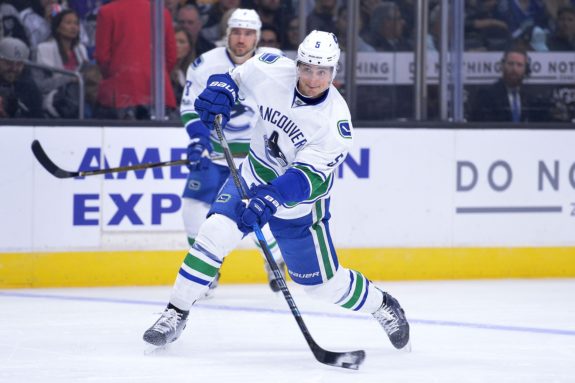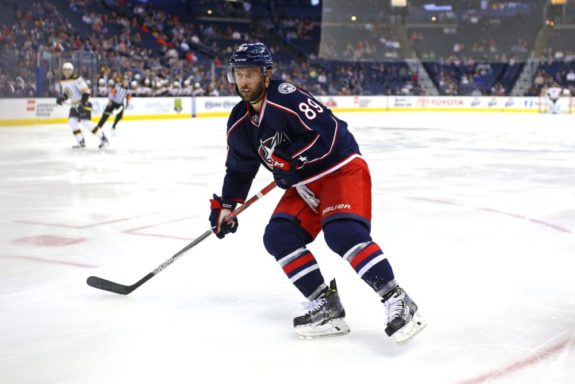The Vancouver Canucks finished 29th in the NHL last season and struggled in just about every aspect of the game, especially the power play. In the past two seasons, the Canucks scored on 15% of their power plays — the worst percentage in the league.
The problem boils down to a few areas ranging from shot attempts to what side players are shooting from on the power play. It was hard to watch last season, especially as none of the Canucks’ coaching staff could fix the problems.
A few off-season signings and the development of a handful of players over the past year has breathed life into the Canucks’ special teams and they will find success this season.
Vancouver Canucks: 3 Stats that must improve in 2018 https://t.co/xo8rGWfyML via @fsthecanuckway pic.twitter.com/FxFIwBfzpu
— FanSided NHL (@FanSidedNHL) September 7, 2017
The Problems
In the 2015-16 season, the Canucks finished 28th in the NHL in shots on goal with 2,311. Last season, they dropped to dead last with a meager 2,273. You can’t score if you don’t shoot, so naturally, the Canucks ranked 29th in goals scored during the 2016-17 season. This was even more apparent on their dismal power play that had no true shooters.
Also, having a blend of righties and lefties on your power play and using them effectively is pivotal to success. The Canucks did not do this in the slightest and often tried to force predictable shots. Having players on their off-wing sitting on the hash marks is what makes a power play work in this NHL era.

For example, look at the 2016-17 Pittsburgh Penguins who had Evgeni Malkin (lefty) on the right hash marks and Phil Kessel (righty) on the left hash marks. This opened them up for one-timers on both sides and gave the power play flexibility to move the puck. They made defenders wary while getting goaltenders to move laterally. The Penguins finished second in the NHL in power play goals, and of course went on to hoist the Stanley Cup.
Perhaps the Canucks’ biggest issue on the power play was the zone entry — my goodness was it ever predictable. How many times did Daniel or Henrik Sedin pick the puck up behind the net, skate up to center and then drop it for Alex Edler to take into the zone? This tactic can be viable but only if your puck carrier heads up ice with speed and purpose like Dustin Byfuglien of the Winnipeg Jets.
The Solutions
Obviously, the only way to increase the Canucks’ shot totals is by shooting the puck more. Showing confidence in players like Brock Boeser, Sven Baertschi and Bo Horvat should have them directing more pucks at the cage.
Additionally, bringing in players like Sam Gagner and Thomas Vanek was a huge step in the right direction for a successful power play. Gagner and Vanek are both right-handed shots with plenty of skill and proven abilities for hitting the score sheet.

On that same note, the development of righties like Troy Stecher and Boeser will increase the balance of righties and lefties and offensive production on the roster. Being a defenceman, Stecher’s development as a right-handed shot is vital for the future of the Canucks’ production on the back end.
There is no definitive solution to the Canucks’ predictability entering the zone. However, I’d start by not letting Edler quarterback the power play. He’s a good player but he is not fast enough nor talented enough to weave through traffic with the puck on a string and establish a setup. Stecher has the speed and is developing his skill to a point where he just might be the new quarterback.
We’ll have to see how coach Travis Green handles the strategic elements of the power play but the new-found balance of skilled righties and lefties is perhaps just what he needs to orchestrate a successful power play. It won’t be the best power play in the league, but it has the potential to jump to a middle-of-the-pack position — a huge leap from being the worst.
https://twitter.com/TSN1040/status/915748407481913345